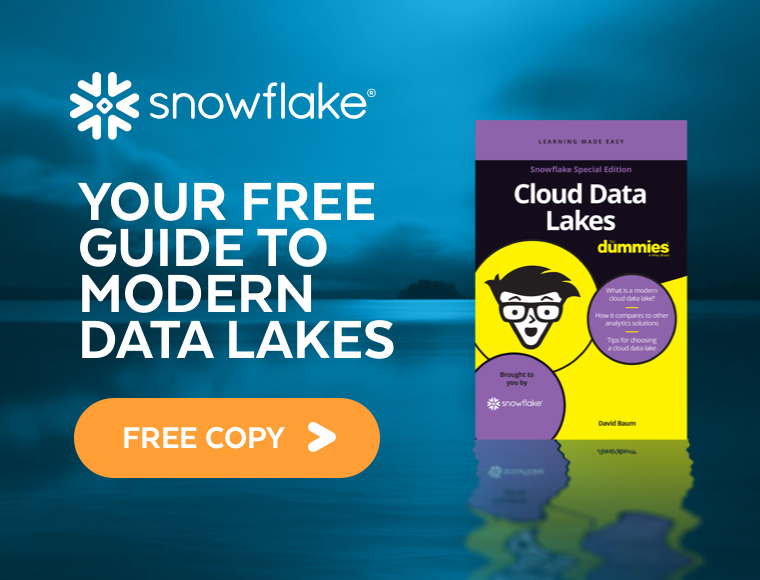Data Lake Architecture
Data lakes are designed to store large amounts of raw data in its native format, including structured, semi-structured, and unstructured data. Data requirements and structures are not defined until the data is required for consumption. Traditional data lakes and data lake architecture were for on-premise solutions although today cloud-based data lake architecture has become more common. Cloud data lakes provide both the scalability and economic model necessary for dealing with the exponential increase in data volume in recent years. However, the ability to deliver self-service analytics has been a major weakness of cloud-based offerings. Moving from a cloud data lake environment to an analytics consumption platform such as a data warehouse involves stitching together intermediary ETL tools, which adds time, complexity, and data quality risk to the journey from raw data to insight.
Data Lake Architecture and Snowflake
The move to the cloud has simplified data infrastructure and data management, but the missing analytics piece (as well as the ability to build data applications off a data lake environment) has created hiccups in the data management and data engineering flow.
Snowflake's platform eliminates these bottlenecks by eliminating the need to deploy and maintain separate data storage and enterprise data warehouse (EDW) environments. With Snowflake's extensible data architecture, the distinction between the data lake and warehouse has been removed. By seamlessly moving, transforming, both structured and semi-structured data from storage to the data warehouse on a single architecture, business users can rapidly access raw data lake sets for analysis without a cumbersome data transitioning process. In addition, Snowflake allows data engineers and other data experts to easily build custom data applications in the Snowflake platform, providing a holistic data cloud for elastic data management and consumption.
Learn more:
Data Management and the Data Lake: Advantages of a Single Platform Approach
Seven Snowflake Reference Architectures for Data Application Builders
Data Cloud Architecture Explained
